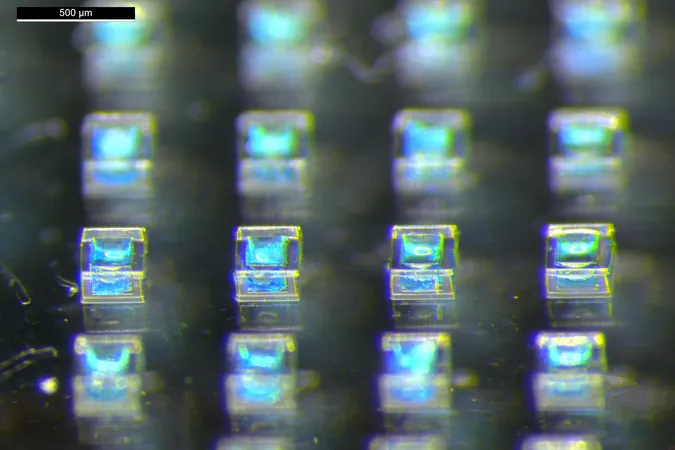
Unveiling Mars: New Study Reveals Volcanic Secrets and Potential Signs of Ancient Life
2025-04-18
Author: Li
A groundbreaking new study reveals groundbreaking insights into Mars' Jezero Crater, the landing site of NASA's Perseverance rover, shedding light on the Red Planet's geological history and the tantalizing possibilities of ancient life.
Co-authored by Dr. Michael Tice from Texas A&M University, the study—published in Science Advances—suggests that the crater's floor is rich in a variety of iron-laden volcanic rocks, providing profound clues to Mars' distant past.
Dr. Tice remarked, "By analyzing these diverse volcanic rocks, we’re unlocking secrets about the processes that shaped this region, enhancing our understanding of Mars' geological history and its potential to have supported life."
The Hi-Tech Quest for Martian Mysteries
Perseverance is NASA’s most sophisticated robotic explorer, having landed in Jezero Crater on February 18, 2021. As part of its Mars 2020 mission, the rover is on a mission to find signs of ancient microbial life by collecting core samples of Martian rock and soil for future analysis on Earth.
Dr. Tice and his team are employing cutting-edge technology aboard the rover to analyze the Martian rocks. This includes a high-resolution camera system and advanced analytical tools that gather detailed chemical compositions and mineral textures, allowing scientists to peer deeper into Mars’ history than ever before. "It’s like having a mobile lab on another planet!" Tice exclaimed.
Revolutionary Analysis with PIXL Technology
Using the Planetary Instrument for X-ray Lithochemistry (PIXL)—an advanced spectrometer—the team examined the chemical properties of rocks in the crucial Máaz formation of Jezero Crater.
Tice highlighted the significance of this technology, saying, "It’s the first time we have analyzed rocks in such detail using X-ray fluorescence. This revolutionizes our understanding of Mars' rocky history."
What Secrets Do the Rocks Hold?
The research unveiled two key types of volcanic rocks: a dark-toned variety rich in iron and magnesium containing intergrown minerals, and a lighter-toned trachy-andesite rock embedded with plagioclase crystals. This complexity indicates a rich volcanic past with varied lava flows.
To understand how these rocks formed, researchers employed thermodynamic modeling, simulating conditions under which the minerals solidified. Their findings suggest that these rocks were shaped by a process called fractional crystallization and possibly mixed with iron-rich crust material, adding to their unique compositions.
Dr. Tice said, "The processes we observe here mirror those in active volcanic systems on Earth, indicating that Mars may have hosted prolonged volcanic activity, potentially creating environments hospitable to life."
The Future of Mars Exploration
This pivotal discovery is crucial for understanding Mars' habitability. If volcanic activity was a longstanding feature, it could hint at conditions conducive to life during Mars’ early history.
The ongoing Mars Sample Return mission, a collaboration between NASA and the European Space Agency, aims to bring the collected Martian samples back to Earth within the next decade for in-depth laboratory analysis.
Dr. Tice believes more groundbreaking discoveries lie ahead, stating, "This study is merely the beginning. With Perseverance’s advanced technology, we are poised to delve deeper into Mars’ geological narrative in ways we never thought possible."


 Brasil (PT)
Brasil (PT)
 Canada (EN)
Canada (EN)
 Chile (ES)
Chile (ES)
 Česko (CS)
Česko (CS)
 대한민국 (KO)
대한민국 (KO)
 España (ES)
España (ES)
 France (FR)
France (FR)
 Hong Kong (EN)
Hong Kong (EN)
 Italia (IT)
Italia (IT)
 日本 (JA)
日本 (JA)
 Magyarország (HU)
Magyarország (HU)
 Norge (NO)
Norge (NO)
 Polska (PL)
Polska (PL)
 Schweiz (DE)
Schweiz (DE)
 Singapore (EN)
Singapore (EN)
 Sverige (SV)
Sverige (SV)
 Suomi (FI)
Suomi (FI)
 Türkiye (TR)
Türkiye (TR)
 الإمارات العربية المتحدة (AR)
الإمارات العربية المتحدة (AR)